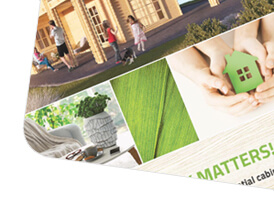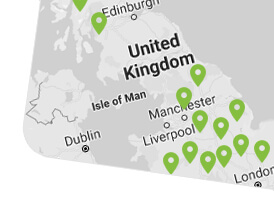Gardens have always been attractive to homeowners all across the globe. People use the available space outside their home to create a cosy, lush, blossoming garden. A garden outside your house can easily give your house a facelift and make it look more extraordinary and beautiful. But today, due to limited space outside the house, a lot of people find it hard to create their own gardens. Nevertheless, that doesn’t mean that just because you don’t have enough space outside your wooden cabin, you can’t have your own garden. Thankfully, there are others ways. One such creative way to have a garden next to your log cabin is a hanging garden.
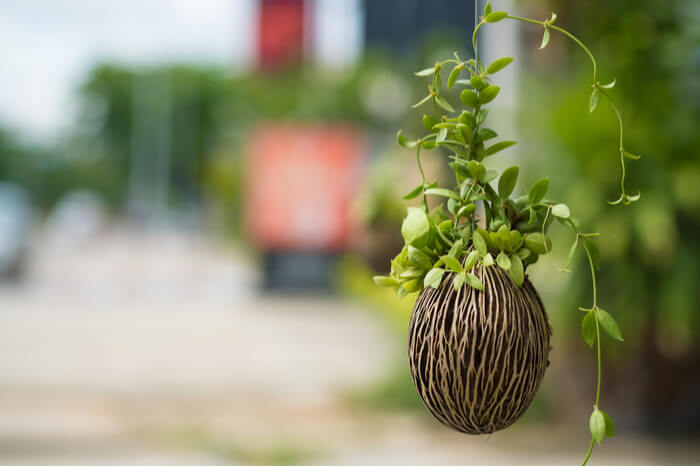
A hanging garden, as the name suggests, is a garden that is not made horizontally. All the plants are grown in planters and those planters are hung in and around your log cabin, or wherever possible. This type of garden can also go some way to meeting your requirements of excellent aesthetics and improved air quality. But creating a hanging garden is a lot different than creating a horizontal garden. Thus, a lot of people find it confusing and little difficult to decide on how to begin making a hanging garden. Here we provide a few really important and effective tips to help you make your own hanging garden next to your log cabin.
Choose your Plants:
When making a hanging garden, your first consideration should be what to grow as here you will have limited space, so choosing plants wisely is really important. There is a general belief that you should choose plants that are light in weight and can flourish in a basket. However, the facts are completely different. Depending on the size, almost any plant can be grown in this type of garden. Plants are usually categorised into two categories: indoor plants and outdoor plants. Indoor plants include a number of ferns and are suited for indoor gardens most of the time. So, if you are thinking of keeping some planters inside your log cabin as well, then indoor plants should be chosen as they thrive well in the shade. But, if you are thinking about hanging planters/baskets outside your log cabin then you should choose outdoor plants. Outdoor plants can include ferns as well as foliage and flowering plants, which are very popular in normal gardens. You can also plant herbs and vegetables; they not only look good but give you easy access to fresh products for your kitchen.
Providing a list of all the plants is not possible. However, generally one should try to select plants that have drooping flowers or are of a weeping nature. Climbers make a nice choice for hanging gardens, when they fall over from the edge of the basket, they create a nice eye-catching look for your log cabin. For basket plants, some plants with a dwarf habit of growth or beautiful droopy flowers also make a nice choice.
Choose your Basket:
Select a planter that suits the situation as well as the plant. As you will be hanging them on the wall of your log cabin, make sure they are not very heavy or bulky. There is a huge variety available, including traditional older style wire baskets to modern self-watering containers. You can also choose clay or ceramic containers, but again opt for lighter ones. Plastic baskets are a very common choice as they are lightweight and most of them have an inbuilt drainage saucer which assists in avoiding watering issues. They are especially suitable for indoor basket gardens as they are available in an array of colours and styles to match almost any décor; and you can also use them for outdoor hanging gardens as they can give your log cabin a very pleasing look.
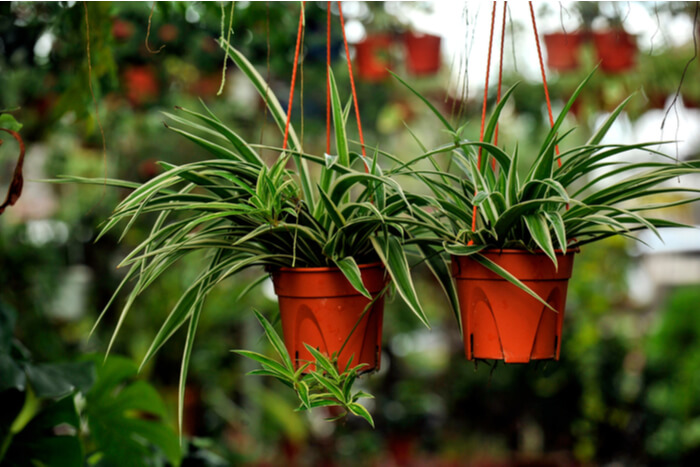
Now, if you are choosing a cane or wire basket, adding a lining material inside the basket is essential, as this is important to retain the potting mix. Some of the popular lining materials include: coconut fibre, paper bark, plastic mesh and others.
Potting Mix:
Your potting mix must be free draining, however, it should retain sufficient amount of nutrients and water, as they are important for your plant to grow. A commercial quality potting mix is likely to provide you with the best results. However, for small amounts, a nice quality loam mixed with same amounts of coarse sand and well composed leaf litter will do a nice job. You can also use commercial brands of slow release fertilizers, twice in a year. By doing this you can avoid the need for regular fertilizing. But, remember that you should not over feed the plants, read the packet of the fertilizer before using it on your plants.
Plant your Planters:
Planting plastic baskets is similar to planting any ordinary pot. Take a moderate amount of potting mix and put it in the bottom of the basket. Now, put your plant in the basket; once the plant is positioned, fill around the plants and pat the potting mix down. Pour on water to settle the mix. Add fertilizer on the top of the basket in the amount suggested on the pack.
Display the Baskets:
You should hang the baskets where they will flourish most. So, when displaying the baskets, make sure that you keep the preferred growing position of each plant in mind. You can use hooks and chains to hang the baskets. Make sure that they are hung or fixed properly and won’t be affected by heavy winds. If the baskets are heavier, then you should choose metal chains as they are stronger than plastic types.
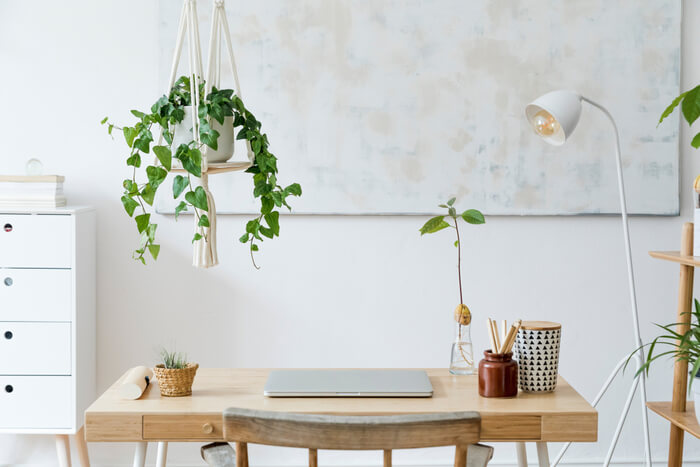
Caring for Baskets:
Correct maintenance is the secret of a flourishing and thriving garden and watering plants properly is the most important item on the list. Don’t allow your baskets to dry out. Pruning and fertilizing are also important tasks. When plants begin to get too large for the basket, either change the pot or plant them in soil.






